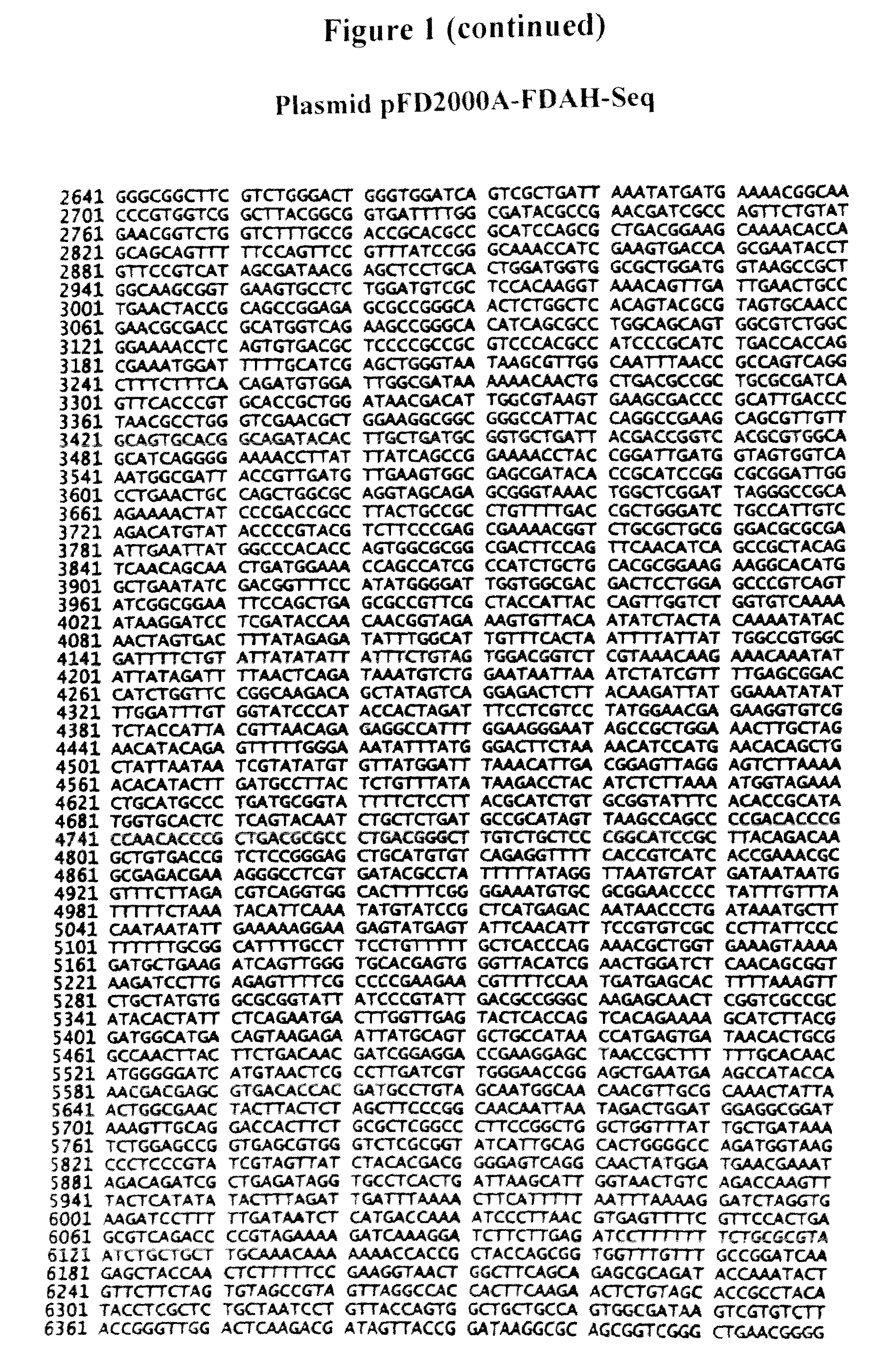Raccoon Poxvirus Expressing Genes of Feline Antigens
a technology of raccoon poxvirus and gene, applied in the field of new recombinant raccoon poxvirus vectors, can solve the problems of cat ulceration on the tongue and in the mouth, endemic feline infectious diseases, and catastrophic situations, and achieve broad spectrum protection and avoidance of adjuvant-related sarcoma side effects
- Summary
- Abstract
- Description
- Claims
- Application Information
AI Technical Summary
Benefits of technology
Problems solved by technology
Method used
Image
Examples
example 1
Construction of Plasmids pFD2000A, pFD2001TK and pFD2003SEL
[0117]The two plasmids pFD2000A and pFD2003SEL were constructed as follows to deliver foreign genes into ha locus of raccoon poxvirus genome. The flanking ha sequences are directly cloned / modified from RCNV genome but not from vaccinia virus, to increase the accuracy and frequency of homologous recombination.
[0118]Similarly, the plasmid pFD20001TK was constructed to deliver foreign genes into tk locus of raccoon poxvirus genome. The flanking tk sequences are directly cloned / modified from RCNV genome but not from vaccinia virus, to increase the accuracy and frequency of homologous recombination.
example 2
First Generation of rRCNV-FCV Constructs
[0119]The rRCNV-FCV2280 Capsid (P11) was constructed and the FCV capsid expression was confirmed by FCV ELISA and Western blot. The construction procedure and recombinant viral construct evaluation in host animals include the following 6 key steps: (1) Clone FCV2280 capsid gene into plasmid vector pFD2000A to generate the plasmid pFD2000A FCV2280 capsid; (2) Three-ways infection / transfection using COS7 cells, plasmid at Step 1 and RCNV to generate the pool clones rRCNV-FCV2280; (3) Pure clone screening by limited dilution and FCV ELISA; (4) Molecular characterization of rRCNV-FCV2280 by PCR, ELISA, and Western blot; (5) Establish the rRCNV-FCV master seed; and (6) The dose titration study of rRCNV-FCV2280 (P11) was done in cats. The challenge study results indicated that cats vaccinated with rRCNV-FCV2280 at even 7.5 Log10TCID50 / mL, showed no significant protection against FCV255 challenge.
[0120]In addition, the rRCNV-FCV2280 Capsid (PSEL) was...
example 3
Second Generation of rRCNV-FCV Construct
[0121]The second generation of rRCNV-FCV was constructed as Example 2 but both FCV2280 and FCV DD1 capsid genes (5′-372 bp nucleotides deletion) were inserted at the ha locus, and the FCV capsid expression was confirmed by FCV ELISA and Western blot. In this construct, recombinant raccoon poxvirus expressed both FCV2280 capsid (P11) and FCV DD1 (PSEL) at the ha locus. The master seed was designated rRCNV-FCV (2280-DD1). The dose titration study was conducted in cats, and the results were summarized as follows: (1) Significant serum neutralization to FCVDD1 titers were observed in 10 cats vaccinated with 7.5 Log10TCID50 / mL while all controls (10 cats) remained sero-negative (p10TCID50 / mL) was observed compared to the controls (p50 / mL) was observed compared to the control group (p<0.05). These results indicated that rRCNV-FCV (2280-DD1) is useful as a vaccine candidate.
PUM
| Property | Measurement | Unit |
|---|---|---|
| Nucleic acid sequence | aaaaa | aaaaa |
| Immunogenicity | aaaaa | aaaaa |
Abstract
Description
Claims
Application Information
 Login to View More
Login to View More - R&D
- Intellectual Property
- Life Sciences
- Materials
- Tech Scout
- Unparalleled Data Quality
- Higher Quality Content
- 60% Fewer Hallucinations
Browse by: Latest US Patents, China's latest patents, Technical Efficacy Thesaurus, Application Domain, Technology Topic, Popular Technical Reports.
© 2025 PatSnap. All rights reserved.Legal|Privacy policy|Modern Slavery Act Transparency Statement|Sitemap|About US| Contact US: help@patsnap.com



